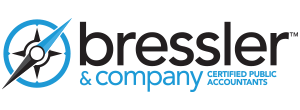Avoid the Most Common Business Financial Mistakes
Many small business owners are entrepreneurs who went into business seeking freedom, a better lifestyle, more money or simply because they wanted to run their own show. Financial acumen is rarely high amongst the skills possessed by such people. As such, it is only to be expected that business owners make financial mistakes which can jeopardize their dreams. Here are four of the most common financial mistakes and how business owners can avoid them.
1. Failing to plan
Few small businesses have a working budget and cash flow forecast which is rolled over on (at least) a quarterly basis. As a result, they make decisions based on guesswork and have no idea whether their business’ actual performance is better or worse than what they expected. A solid budget requires the following information, ideally seasonalized and presented on a month by month basis:
- Sales – not just a lump sum figure, but broken down by product or service line and calculated as number of sales multiplied by average sale value
- Variable costs – these are costs that vary with sales and as such, should be driven by your sales forecast
- Fixed costs – unless there are any significant changes, these can be taken from your most recent financial statements and adjusted for any known or expected increases
Once you have developed a budgeted profit and loss account, you should then create a cash flow forecast. This differs from the profit and loss budget because it is looking at the cash inflows and outflows. As such, it needs to take account of how long your customers take to pay you, how quickly you turn over inventory, how quickly you pay your suppliers, any loan repayments due and any forecasted capital expenditure that will not appear in the budget profit and loss account.
For a thorough budget that could be presented to a bank for the purpose of raising finance, you should also complete a budgeted balance sheet.
2. Financing capital expenditure out of cash flow
As a general rule, and to the extent that it is possible, it is good practice to cash flow the lifetime of a purchase. If you are buying stock to sell in the short term, then finance it out of your day to day working capital. But if you are buying a large piece of machinery with a ten year life, then you should look to finance it over ten years. Similarly, don’t fall into the trap of many small business owners where you have a good quarter and go out and buy yourself a flashy new car – out of cash flow. Unless you are confident (and have evidence to back it up) that your strong sales will continue, you could find yourself in a cash flow bind if you empty the bank account to buy new assets every time you find you have a bit of surplus cash.
Form a strong relationship with a bank manager and keep them up to date with your plans. Often, the banks will be happy to lend when times are good for your business and you should take advantage of that to properly finance any capital expenditure required to expand your business. Similarly, the best time to secure an overdraft is when you don’t need it. The banks will be more willing and able to help you out and then if you hit a rough patch, you have a safety net.
3. Cutting costs rather than driving revenue
When considering how to improve profitability, many business owners resort to hacking at costs. That’s all very well, but there is a finite limit to which expenses can be cut – zero. And then you have no business. On the other hand, the opportunities to grow revenue, assuming you manage your growth within the constraints of your cash flow, are limitless. It comes down to understanding the drivers of revenue, which in most businesses are:
- Number of customers
- Number of times those customers buy from you
- The average sale you make each time a customer buys
Once you understand the drivers, you can put strategies in place to increase each of those critical measures.
Another thing to be aware of when reviewing costs, which, of course, is still a valid strategy, is knowing where to cut. For example, too often businesses cut back on marketing which can often be the last place you should be making cuts. Similarly, a knee jerk reaction to cut back on travel expenses could see an adverse reaction (a recent study conducted by Oxford Economics and commissioned by the US Travel Association found that 57% of businesses surveyed felt that cutting their travel costs during the recession in the US hurt their business.)
4. Running your business from a spreadsheet
This is quite possibly the most important financial mistake to avoid of all of the mistakes listed. In this era of Cloud accounting solutions, accurate management information integrated with daily bank feeds is readily available. Not to take advantage of such information is to run your business by the seat of your pants. Yet many small businesses persist in keeping their records on a spreadsheet or worse, in a shoe box!
Contact us, Bressler & Company, today if you feel that your accounting records are inaccurate, unhelpful or obsolete. We can help you avoid all four of the key financial mistakes outlined in this article as well as put together all the necessary financial monitoring and reporting to set you up for more profitable days ahead. Give us a call at 559-924-1225 today.





